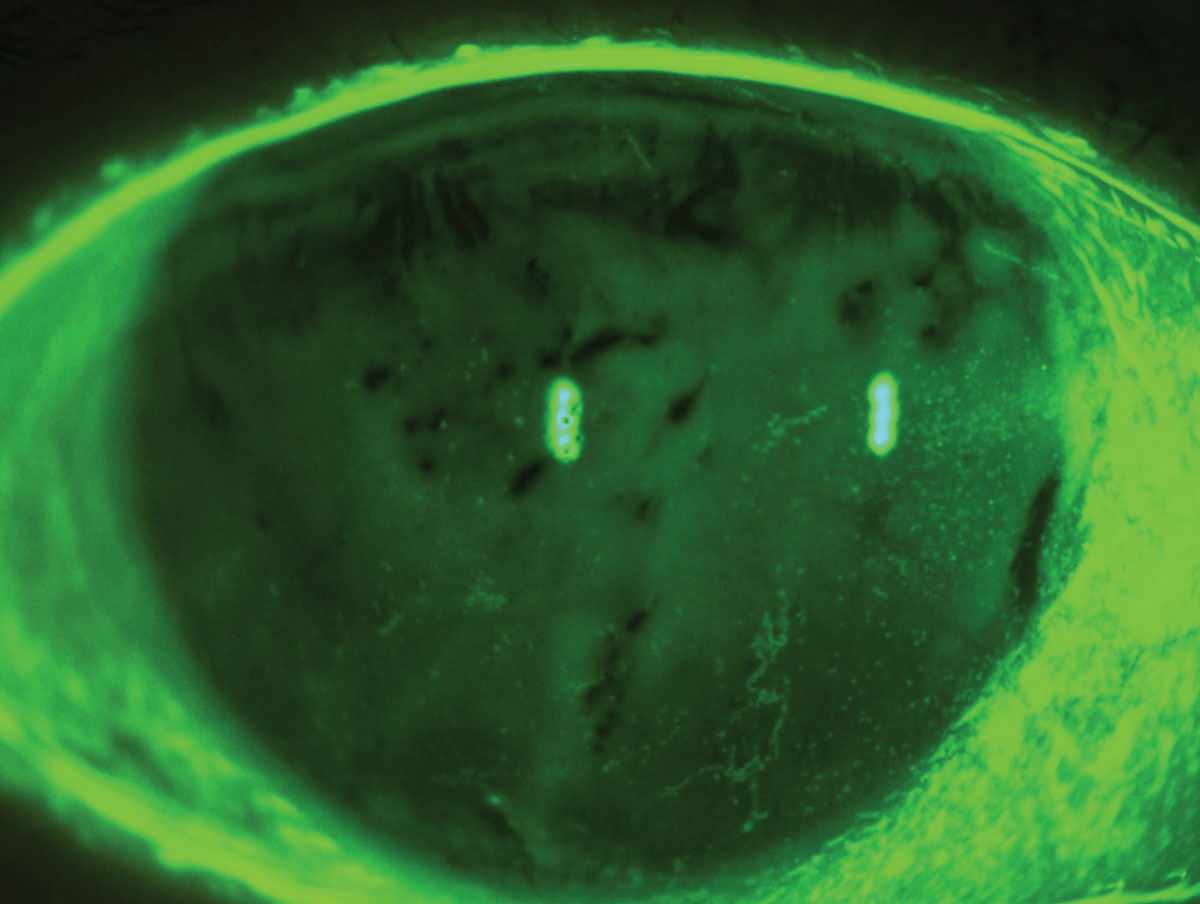 |
|
Study finds that underserved groups with dry eye tend to already be at a disadvantage when they present for care. Photo: Luis Rojas, OD. Click image to enlarge. |
Health disparities are prevalent across eye care, due in part to socioeconomic factors linked to race and ethnicity. A recent studying looking into how this affects dry eye found that patients in minority groups presented with worse objective parameters and less prior c46are but that income and health care access may not fully explain the observed undertreatment at presentation.
The team reviewed the medical records of 465 patients (33.8% Black, 33.8% Caucasian, 18.3% Asian, 14.2% Hispanic) for demographics, socioeconomic factors, treatments and objective dry eye parameters.
Compared with white patients (3.2%), a larger proportion of minorities used Medicaid or lacked health insurance (Black: 8.3%, Asian: 10.6%, Hispanic: 18.2%). Black and Hispanic patients had a lower estimated median household income than white patients, who earned less than Asian patients (white: $98,472, Black: $75,554, Asian: $105,503, Hispanic: $86,839). Prior to presentation, fewer minority patients received prescription treatments or procedures (Caucasian: 61.8%, Black: 30.6%, Asian: 43.5%, Hispanic: 43.9%). Although at the baseline visit minorities had worse mean conjunctival (Caucasian: 1.7, Black: 2.2, Asian: 2.4, Hispanic: 2.6) and corneal staining scores (Caucasian: 1.6, Black: 2.5, Asian: 2.3, Hispanic: 2.4), no differences were noted at the final visit.
“Social determinants of health are difficult to address by health care providers because the social determinants arise from complex interactions of patient socioeconomic factors, public policy and societal structure,” the study authors wrote in their paper. “Nevertheless, the factors that are directly within the provider’s control include awareness of these health disparities and associated biases in treatment patterns. Furthermore, medical institutions play an important role by providing training for diversity and inclusion, minimizing unconscious or implicit bias and providing equitable care for patients from underserved groups.”
Cui D, Mathews PM, Li G, et al. Racial and ethnic disparities in dry eye diagnosis and care. Ophthalmic Epidemiol. October 6, 2022. [Epub ahead of print]. |


